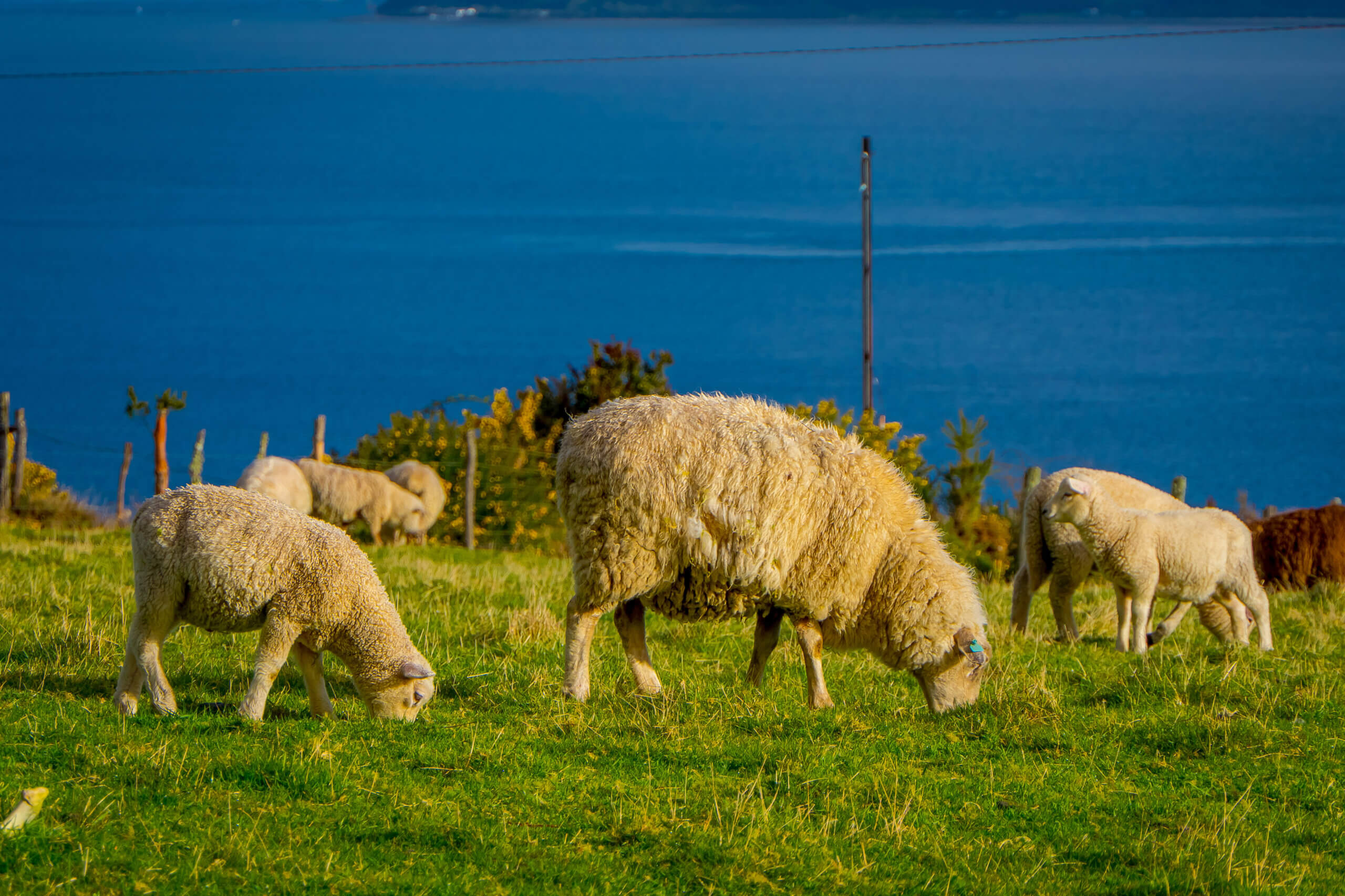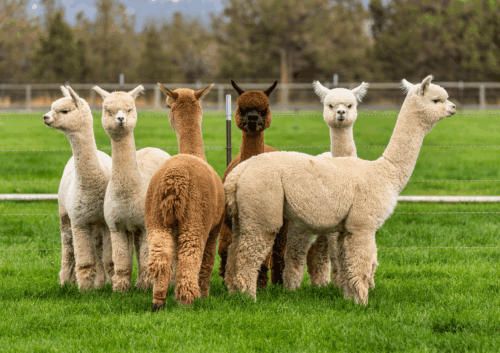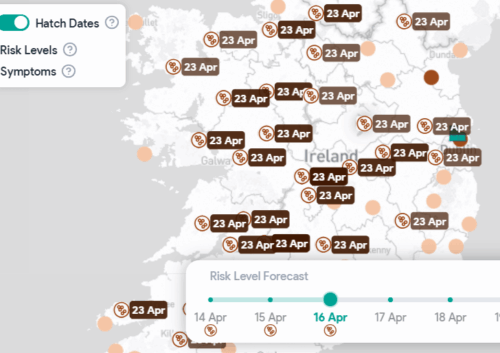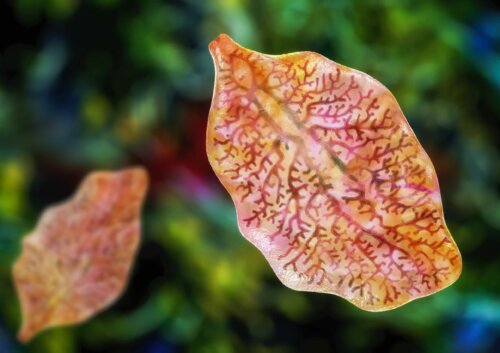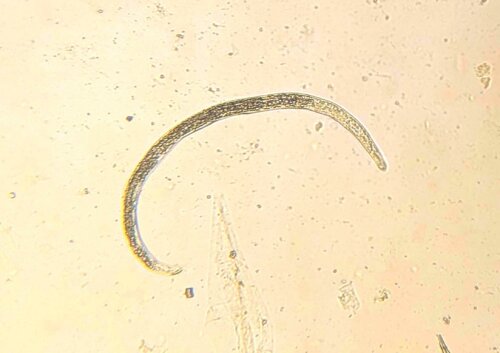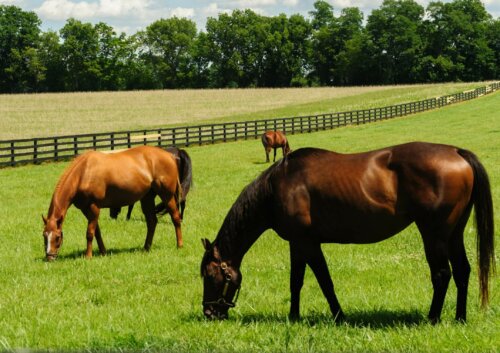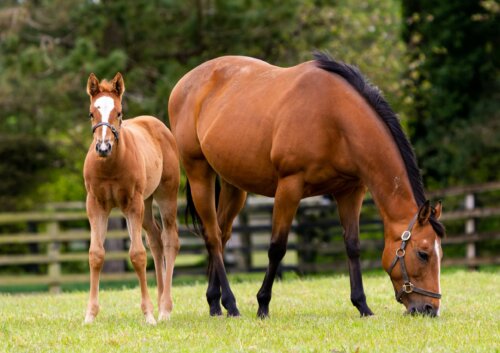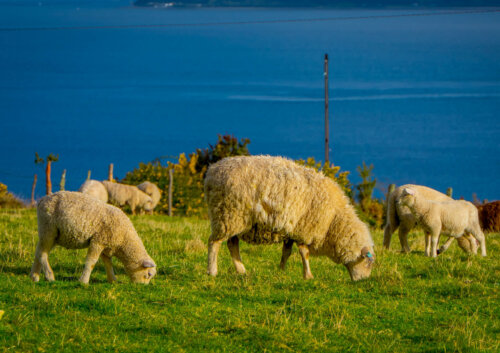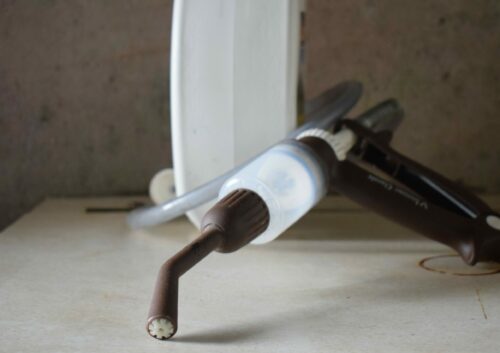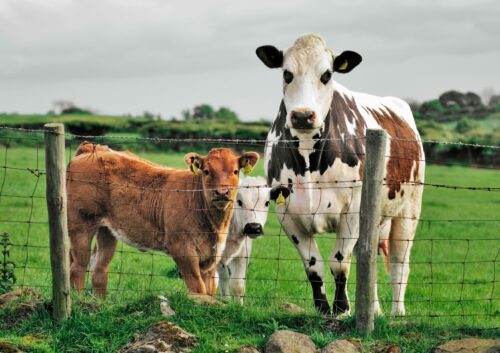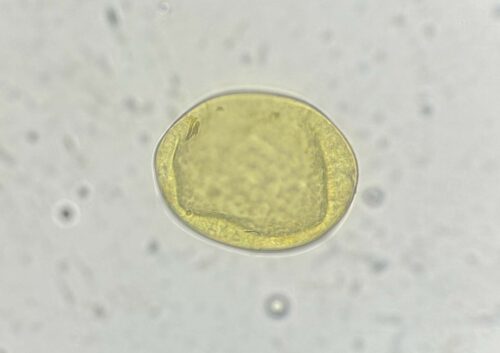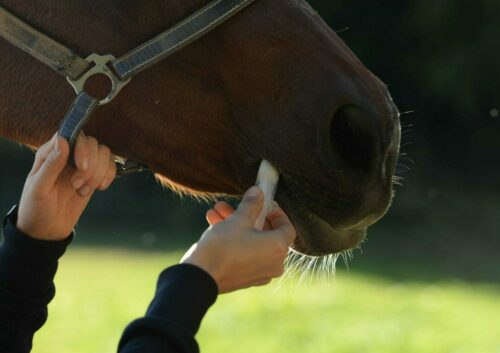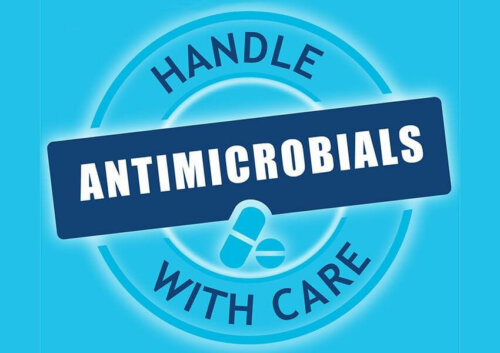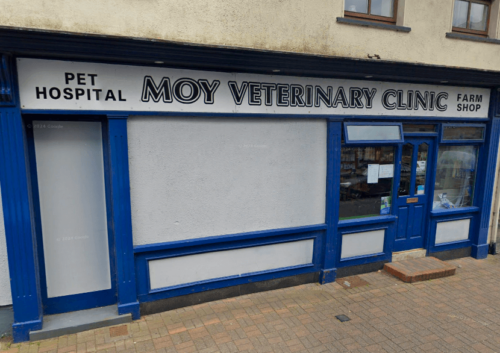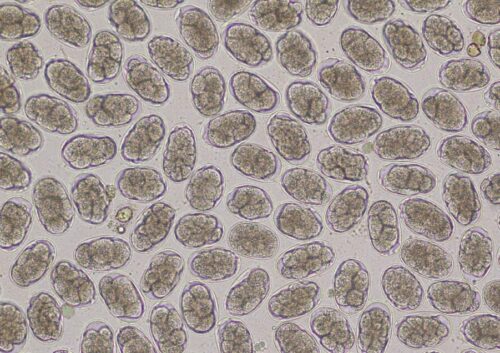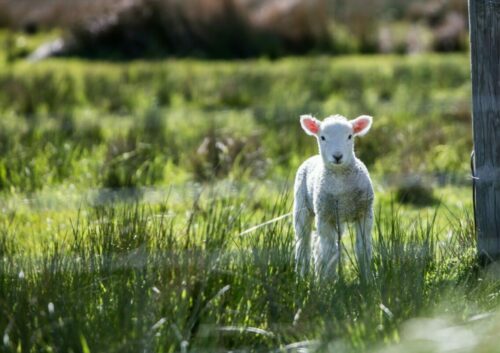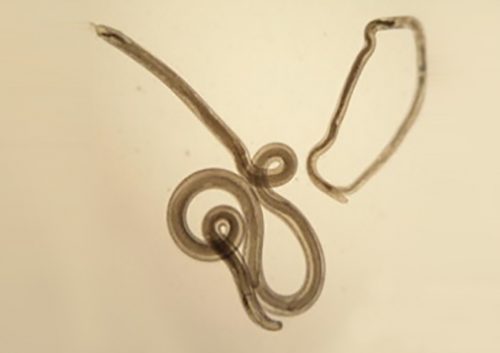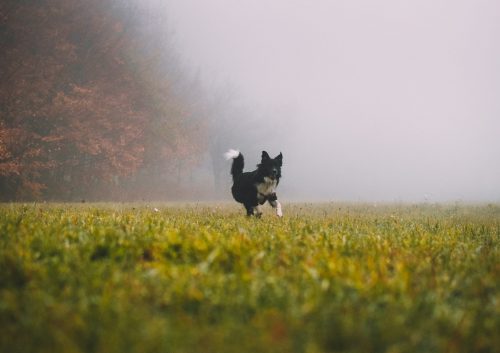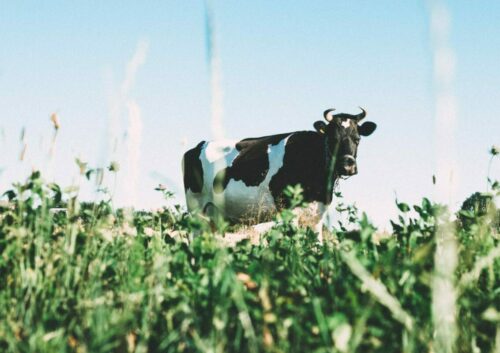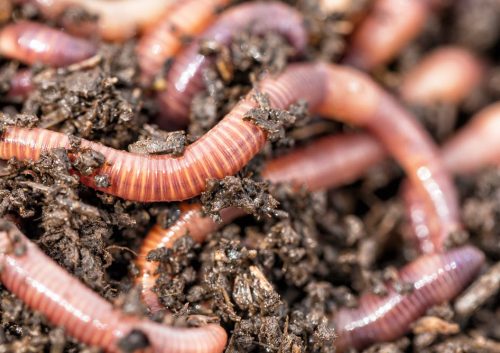The body condition quality of livestock can have an impact on how susceptible the animals are to illness or disease. If an animal does not have all their needs met, they may have a weaker immune system and therefore, can become very ill following contact with parasites. Two important factors to consider when analysing the body condition of an animal is nutritional health and diet. The effects of livestock nutrition can aid in their resilience to parasitic infection. These effects are related to dietary feed supplementation, as well as pastures the animals may graze on.
A major element of an animal’s diet is their protein consumption. Protein is known to aid in animals’ resilience to parasite susceptibility. Providing feed supplements, such as protein-rich supplements have been seen to reduce the parasitic burden in livestock [1]. An example of this is evident in a study whereby groups of lambs were exposed to various pastures, including new, established, supplemented and unsupplemented, and Fecal Egg Count (FEC) tests were performed. The FECs of lambs who were exposed to new and supplemented pastures showed lower FEC values than others [2].
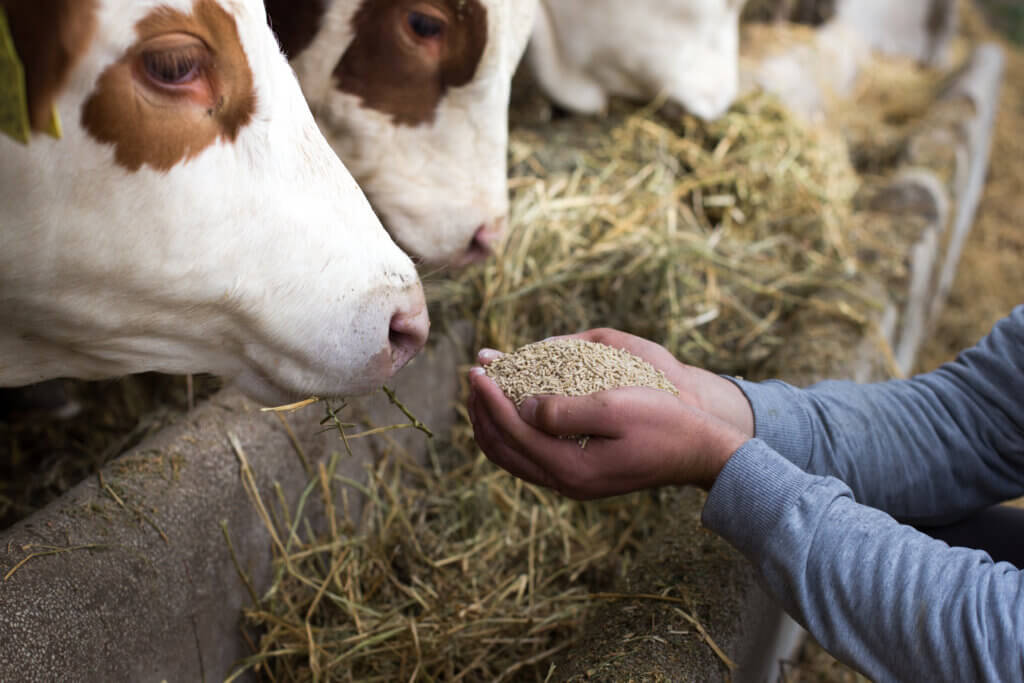
Proteins are macronutrients needed within livestock diets to support a healthy immune system through the generation and repair of muscle, hormone and enzyme regulation and to trigger immune responses [3]. Livestock receive protein in the diet through different forms, such as their standard eating habits and extra supplementation. Ruminant animals harbour special microorganisms in their rumen that allows for the breakdown and conversion of plant proteins into microbial protein, which is a major source of protein for grazing animals.
Rumen microbial protein supplies approximately two thirds of amino acids absorbed by ruminant animals [4]. Bypass proteins are proteins consumed by ruminants that cannot be digested by rumen microorganisms. These proteins are not necessary in the diet unless there are specific needs, such as during pregnancy and lactation. For equids, unlike ruminants, the equine microorganisms in the foregut allow for the breakdown of most proteins to amino acids and are absorbed for muscle growth, etc. However, any food that cannot be digested in the foregut moves to the hindgut. Plant matter, such as the protein found in plant cell walls, are fermented in the hindgut by microbes [5].
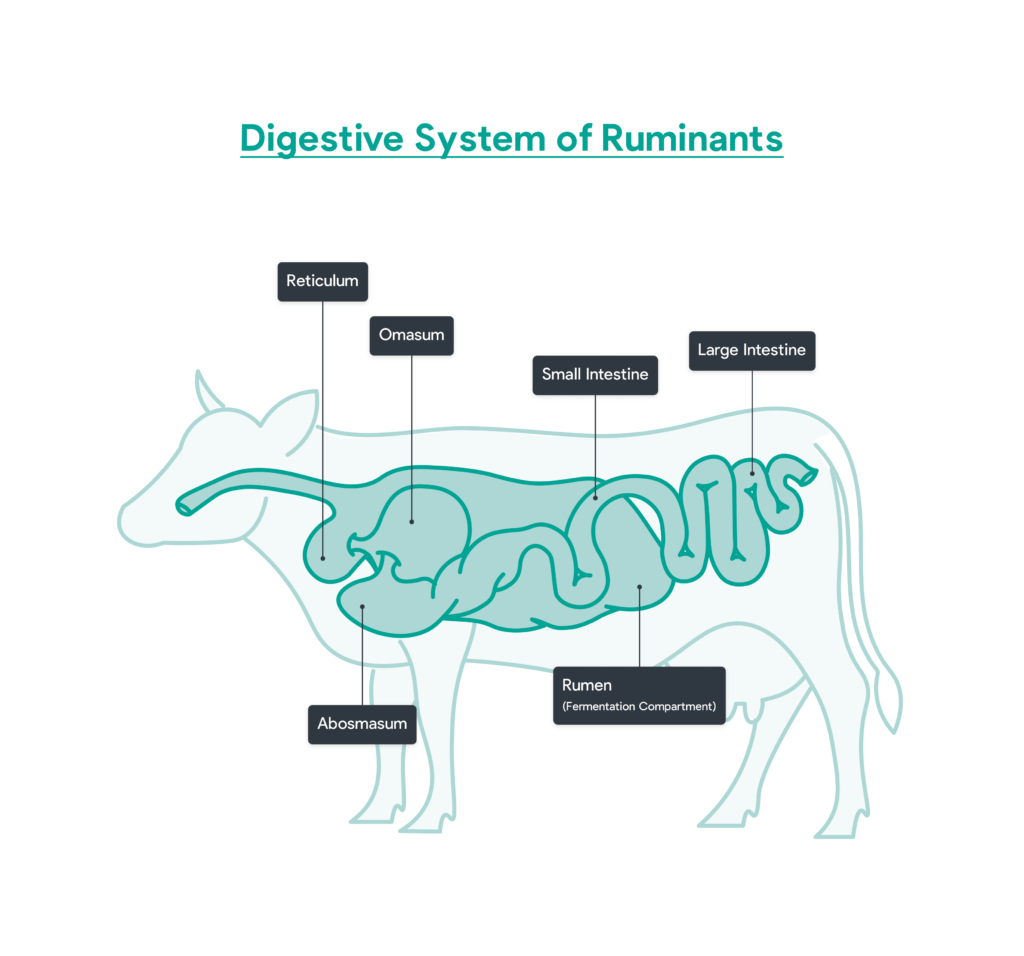
Figure 2. Digestive system of a ruminant animal
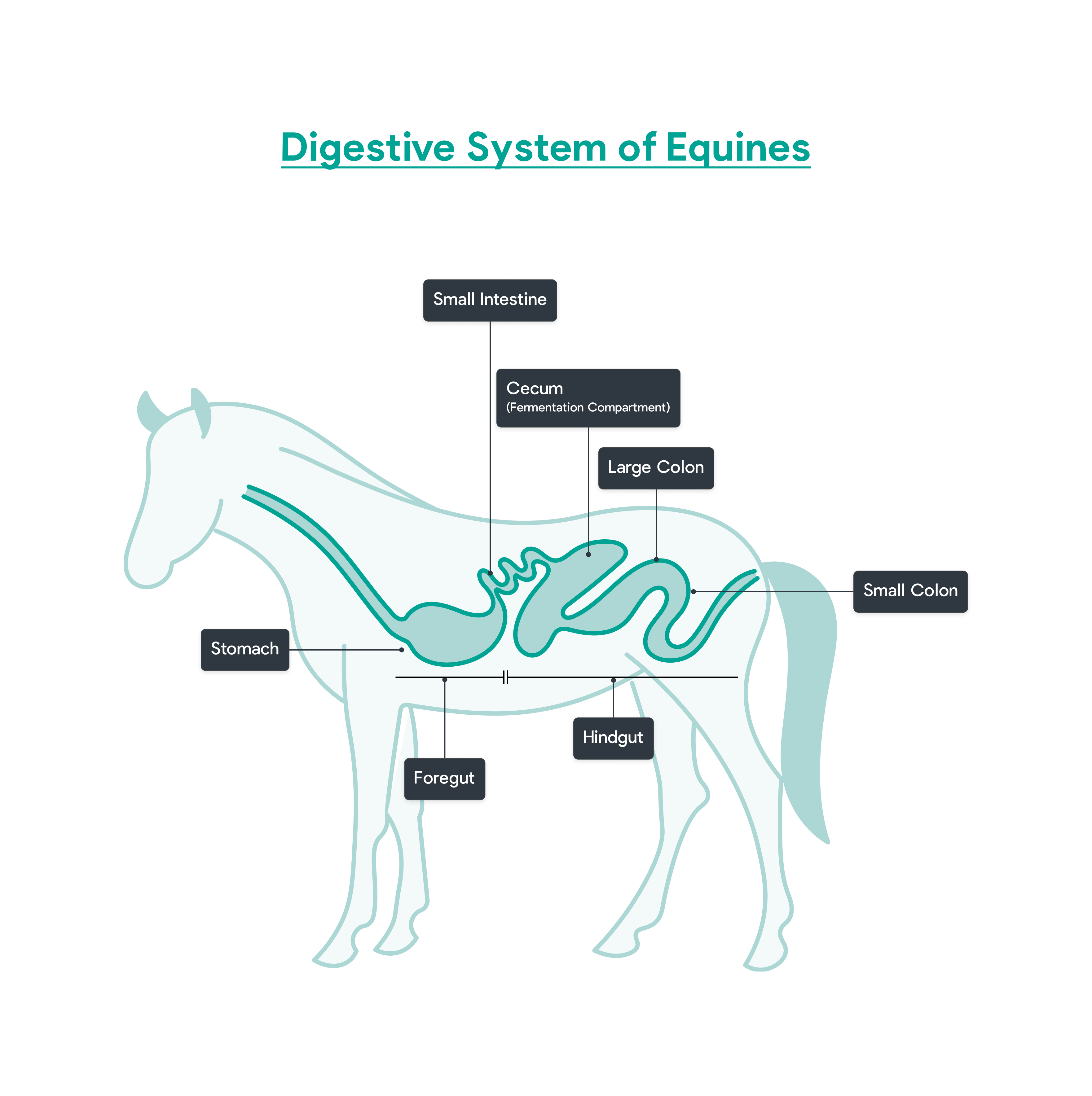
The breakdown of protein provides the amino acids needed for cytokine and antibody production in the animal’s bloodstream that initiate an immune response. This enables the body to fight off any infections present, including parasites.
It is of great importance that more vulnerable animals, such as young stock or pregnant and lactating dams or ewes, achieve increased protein and supplemented diets as their immune systems are most susceptible to parasitic infection. In ewes, horses and goats, a circumstance of periparturient relaxation of resistance (PPRR) can occur while in later stages of pregnancy and early lactation. This means the previous resistance held by the animal to parasitic infection is lost or presents lower than usual, resulting in increased susceptibility, which can be a source of infection to their young [6][7]. This issue is less prevalent in cows as cows present with an overall stronger immune system.
Supplementation of trace minerals, or micronutrients, has also been found to aid in regulating parasitic resistance in livestock [8]. Deficiency in trace minerals can lead to inadequate biological process pathways. These micronutrients are required for enzymes. Enzyme deficiency allows for a reduction in the efficacy of the immune system; therefore resulting in an animal being more susceptible to a parasitic infection [8]. All supplementation should be discussed with an animal health advisor to avoid undesirable interactions occurring.
Phosphorus, an essential mineral that works alongside calcium to ensure healthy bones, also works in the gut for absorption of essential nutrients [9]. Cobalt is essential for the production of vitamin B12 and the formation of red blood cells in ruminants and horses. These minerals are important elements needed for efficient immune responses [10]. Iron is a required micronutrient in healthy livestock and an essential part to robust livestock immunity. Animals that are ill with a parasitic infection may need more iron supplementation to prevent anaemia.
For grazing livestock, swards – the name given to a portion of ground covered with grass – is a major source of nutrition. It is proven that multispecies swards contain bioactive forages. These pastures are believed to have a lower parasite burden than a single species, and studies are in progress to further this. Chicory, clover and plantain should be considered in pasture due to their composition of condensed tannins [11]. Tannins have been found to decrease the growth of the larval stage of parasites [12]. This type of sward also allows for a variation of protein and minerals to the animals. For all swards, it is recommended that sward heights are no less than 3-4 cm for grazing to avoid the ingestion of infected larvae [13].
The overall health of an animal is determined, like humans, by a balanced diet. The correct nutrients can contribute to a sufficient immune system, reducing susceptibility to a severe parasitic infection. Ensuring all dietary and supplemental needs are met and understood can help livestock fight off any infection they may face.
References
[1] SCOPS 2012, Parasites technical manual 4th edition [Internet]. [cited 2024 July 03] Available from: https://www.scops.org.uk/workspace/pdfs/internal-parasites-technical-manual-4th-edition-do-not-use-as-updated-version-online.pdf
[2] BJ Campbell et al, 2021, The effects of protein supplementation and pasture maintenance on the growth, parasite burden, and economic return of pasture-raised lambs [Internet]. [cited 2024 July 03] Available from: https://www.ncbi.nlm.nih.gov/pmc/articles/PMC8309954/
[3] Andrew LaPelusa; Ravi Kaushik. 2022, Physiology, Proteins [Internet]. [cited 2024 July 03] Available from: https://www.ncbi.nlm.nih.gov/books/NBK555990/
[4] Veterinary World 2008, Various factors affecting microbial protein synthesis in the rumen [Internet]. [cited 2024 July 03] Available from: https://www.veterinaryworld.org/2008/June/Various%20factors%20affecting%20microbial%20protein%20synthesis%20in%20the.pdf
[5] Hira Laboratories 2024, Digestion [Internet]. [cited 2024 July 03] Available from: https://hiralabs.co.nz/digestion/
[6] Panagiota Tyrnenopoulou et al 2021, Interactions between Parasitic Infections and Reproductive Efficiency in Horses [Internet]. Available from: https://www.mdpi.com/2673-6772/1/3/16
[7] Grace VanHoy 2023, Overview of Gastrointestinal Parasites of Ruminants [Internet] [cited 2024 July 03] Available from: https://www.msdvetmanual.com/digestive-system/gastrointestinal-parasites-of-ruminants/overview-of-gastrointestinal-parasites-of-ruminants#Epidemiology_v81478970
[8] Wormboss, Nutrition for Resistance and Resilience to Worms – Sheep [Internet] [cited 2024 July 03 ]Available from: https://wormboss.com.au/tests-tools/nutrition-for-resistance-and-resilience-to-worms-sheep/#:~:text=Feeding%20protein%2Drich%20supplements%20such,or%20more)%20of%20bypass%20proteins
[9] IFP- Inorganic feed phosphates 2024, Phosphorus: a vital source of animal nutrition [Internet] [cited 2024 July 03] Available from: https://www.feedphosphates.org/index.php/guides/11-guides/11-phosphorus-a-vital-source-of-animal-nutrition#:~:text=Phosphorylation%20is%20responsible%20for%20intestinal,large%20number%20of%20co%2Denzymes.
[10] Anna Erickson 2019, Cobalt deficiency in sheep and cattle [Internet] [cited 2024 July 03] Available from: https://www.agric.wa.gov.au/livestock-biosecurity/cobalt-deficiency-sheep-and-cattle#:~:text=All%20ruminants%20
[11] SCOPS 2022, Graze forages with anthelmintic (bio-active) properties [Internet]. [cited 2024 July 03] Available from: https://www.scops.org.uk/workspace/pdfs/2-4-4-graze-forages-with-anthelmintic.pdf
[12] B.R. Min et al 2003, Tannins for suppression of internal parasites [Internet]. [cited 2024 July 03] Available from: https://academic.oup.com/jas/article-abstract/81/14_suppl_2/E102/4789858?redirectedFrom=fulltext
[13] AHDB Beef & Lamb, Hybu Cig Cymru and Quality Meat Scotland, Worm control in sheep [Internet]. [cited 2024 July 03] Available from: https://meatpromotion.wales/images/resources/Worm_Control_in_Sheep_09-17_+notes_cropped.pdf
